At the culmination of each college golf season, the Golf Coaches Association of America (GCAA) and Women’s Golf Coaches Association (WGCA) announce the selections for the annual All-American golf teams. Broken down into First team, Second team, Third team, and Honorable Mention, being selected for any of these honors is an incredible achievement that isn’t taken lightly. The distinctive plaques, shipped to each of the teams whose player made the list, are unboxed with as much excitement as any Christmas toy and proudly hung on the walls of [multi-million dollar] golf facilities. Golf programs revel in the number of All-Americans counted among their alumni, making a particular effort to highlight those players who earned multiple entries in the record book. In short, is kind of a big deal.
All-American teams exist in most collegiate sports today, but the story of how college golf started selecting its teams is particularly unique. What led to the first All-American team selections in 1958? Why were there six players on each team instead of the 10 we’re used to seeing today? Would we even recognize any of the players from this list over half a century ago? Let’s find out!

*NOTE: underlined text provides a link to references or sites with more information
TLDR:
Listen while you scroll! Check out this AI-generated podcast of the below info:
BACKSTORY
OTHER SPORTS
Unsurprisingly, the concept of collegiate All-American teams seems to originate with football. In 1889 - approximately 7 years before the advent of collegiate golf and 17 years before the creation of the NCAA - legendary sports journalist Caspar Whitney named 11 players to the first ever printed College Football All-America Team. Beginning in the 1890s, the “Father of American Football” Walter Camp began publishing his annual All-American team selections. Many other individuals and organizations have put out their own lists in the ensuing decades, necessitating the creation of the term “Consensus All-American Teams” which continues to this day.
Basketball is another sport with more than a century of consensus All-American team selections, dating back to 1905. Practically every sport the NCAA supports today has some version of a recognized All-American team.

1932 COLLEGE HUMOR ALL-AMERICAN GOLF TEAM
One of the sources used to determine the consensus All-American selections in basketball, baseball, and a few other “minor” sports in the 1930s was a “humor” magazine called College Humor. It seems strange now that a magazine in the same vein as National Lampoon would be considered a credible source of these types of selections, however CH was instrumental in recognizing not only a First, but also Second and Third Team selections of All-American basketball players starting in 1929. For the 1932 season, they were one of three entities - Helms (retroactively) and Converse - to compile a list of All-Americans in basketball that included Purdue senior John Wooden.
That same year, College Humor solicited a similar list of top collegiate golfers from Columbia coach Alex Barry. As far as we can tell, this is the first time that a list of college golf All-Americans was compiled and printed prior to the 1950s1. This initial team included high finishers at the 1932 collegiate championship as well as multiple members of the 1932 American Walker Cup team:
Henry Kowal [Colgate] - 1932 (and later 1933) championship medalist
Johnny Fischer [Michigan] - 1932 individual champion, many time Big10 individual champ, and eventual 1936 US Am winner
Robert “Bob” Kepler [Ohio State] - 1931 individual runner-up and later legendary Ohio St golf coach
Don Moe [Oregon] - Walker Cupper, one of the best players from the Northwest
Arthur Byxbee [Penn] - team captain, lost only one match all season (beat #1 player from Swarthmore, Princeton, Georgetown, George Washington, Williams, Yale, Dartmouth, Holy Cross, and Delaware)
Tommy Tailer [Princeton] - described as an early prodigy from New York
Charles Seaver [Stanford] - one of the first legends at Stanford, Walker Cupper
Billy Howell [Washington & Lee] - 1932 individual runner-up, Walker Cupper
Sidney Noyes [Yale] - member of championship team, team captain, individual semifinalist
Johnny Parker [Yale] - member of championship team, team captain-elect for next season
NON-COLLEGIATE “ALL-AMERICAN” GOLF
The term “All-American” for golf was not always associated with the collegiate game. In fact, it’s important to note that there was a long running professional tournament called the All American Open that began in 1941 and ran through the 1950s. Run by the infamous George S May and played at Tam O’Shanter CC, the tournament was the precursor to the World Golf Championship. Adding to the confusion, May added other men’s and women’s amateur and pro events with similar names.
Additionally, Gene Sarazen and others began naming a list of “All Americans” in the 1930s. Instead of recognizing top collegiate players, Sarazen went through every club in the bag and identified the player (mostly pros) who were the best with that club. It’s interesting to note that the Macdonald Smith listed below - winner of multiple Western Opens and brother of two US Open winners - actually “coached” the Vanderbilt golf team for the 1933-1934 season.
ESTABLISHING NCAA GOLF ALL-AMERICANS
For the first 40 years of the sport’s existence prior to WWII, the teams were each primarily run by their team captain, and a player-run organization called the Intercollegiate Golf Association (of America) was responsible for organizing the annual championship, advising the oversight committee - first the USGA in 1930 and then the NCAA in 1939 - and governing membership.
Like most things, college golf took off in the years following the war(s) and universities paid (not well) a faculty member or full-time coach to run their golf team. Stanford’s Eddie Twiggs was one such coach who was said to be very forward-thinking. After that first NCAA-ran championship in 1939, Twiggs commented that the tournament was in need of some sort of qualifier to determine entry and keep the tournament from becoming unwieldy. Twenty-five years later a committee was created to do that very thing, and another 25 years after that Regionals was instituted. By 1947 the NCAA golf championship was already back to pre-war numbers with over 200 players and nearly 50 teams represented in the field. It became clear that an organization similar to the IGA but run by the coaches was needed to advise the NCAA golf committee on what changes were needed; thus the National Collegiate Golf Coaches Association (NCGCA) - now known as the Golf Coaches Association of America (GCAA) - was born. Naturally, Coach Twiggs was elected to run the group for the 1947-48 season.
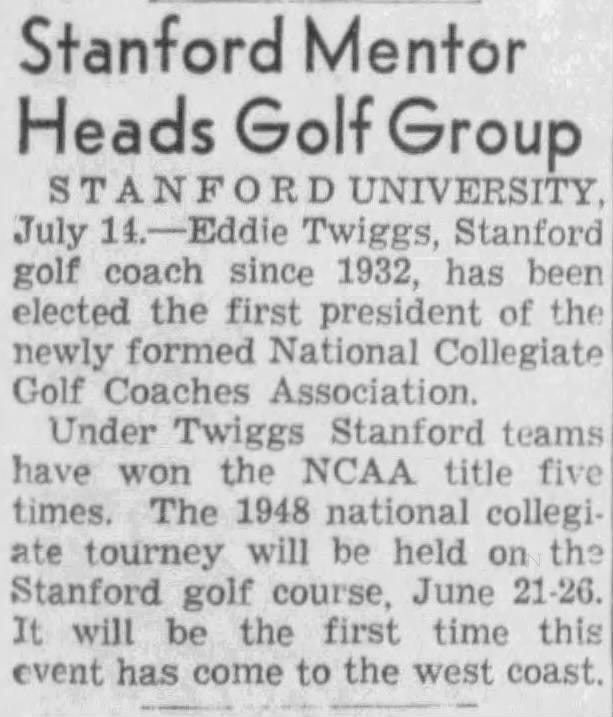
At each championship when the teams were all together, the NCGCA met to discuss potential ideas to present to the NCAA Golf Committee and elect new leadership for the next season. Houston’s Dave Williams entered the scene in the early 1950s and quickly established himself as another innovative coach with ideas on how to improve not only the golf championship but also the sport at large. By 1957 he was publicly advocating for the creation of a golf All-American team and more detailed record-keeping. A decade later, Coach Williams was quoted on the matter in a Sports Illustrated article by John Underwood:
"I wanted the coaches to start an All-America team in 1957. Every other sport has one. They said no, because it would be mostly Houston players. I told [Coach] Sam Voinoff of Purdue, 'O.K., your Joe Campbell is on the Walker Cup team but he will never be an All-America.' The next year they voted the All-America team in, using the same selection plan I had proposed. They did not say a word to me, but that is all right as long as they did it.”
FIRST NCAA ALL-AMERICAN GOLF TEAM [1958]
Whether others agreed or Coach Williams was simply expressing the sentiment shared by the other coaches, the first NCAA Golf All-American team was announced at the 1958 championship. The announcement came from the president of the NCGCA - Stanford’s “Bud” Finger who had replaced the retired Eddie Twiggs in 1948 - and Notre Dame’s legendary coach Rev. George Holderith representing the NCAA Golf Committee.
The NCAA All-American team was sponsored by the Wheaties Sports Federation as a part of their ongoing sports promotional effort, spearheaded by the first two-time Olympic gold medal pole vaulter whose other first was becoming the first athlete to adorn the front of the Wheaties box. The team consisted of three 6-man teams, mimicking the popular first/second/third team structure used by other collegiate sports. Golf chose 6 players for each to be consistent with the team structure which allowed up to 6 players to compete for the team title with the best 4 scores counting toward the team total (6-count-4). The NCAA adopted the now familiar 5-count-4 structure in 1960, believed to be due in large part because of Coach Williams’s strong feelings on two drop scores being superfluous.
FIRST TEAM
Allen “Al” Geiberger [USC]: Pacific Coast Conference Champ
John Konsek [Purdue]: Big Ten Conference Champ
Phil Rodgers [Houston]: Border Olympics medalist, Missouri Valley Conference Champ, NCAA co-medalist (Ab Justice [Ok St]), member of team champs, and NCAA individual champ
Bill Thornton [UNC]: Atlantic Coast Conference Champ
Ward Wettlaufer [Hamilton College]: 1957 NCAA Runner-up
Dick Whetzle [North Texas (State)]: Southern Intercollegiate Champ
SECOND TEAM
Tommy Aaron [Florida]
Joseph Grace [Notre Dame]
Jim Hiskey [Houston] - member of NCAA team champs 1956-58, 1957 AAII individual medalist, Beaumont Enterprise Intercollegiate medalist, member of Missouri Valley team champs 1956-58
John Liechty [Iowa]
Bill Seanor [Stanford]
Bob Shave [Florida State] - 3rd place finish in the 1957 NCAA championship, multiple top10 tournament finishes including 1958 Southern Intercollegiate
THIRD TEAM
Eugene “Gene” Francis [Purdue]
Bob McCallister [USC]: 1956 & 1957 Pacific Coast Conference Champ
Bob Nichols [Texas A&M]
Jerry Pittman [SMU]: 1957 Southwest Conf champ
James Remmert [Wisconsin]
Frank Wharton [Houston]: member of NCAA team champs 1956-58, individual quarterfinalist in 1958 NCAA championship, member of Missouri Valley team champs 1956-58
AFTERWARDS
Nearly 19 years before he was known as “Mr. 59" Al Geiberger was one of the inaugural NCAA All-Americans. Fittingly, he would repeat as a 1st Team All-American selection the following year in 1959, one of just five players selected those first two years: Tommy Aaron (1st), John Konsek (1st), Ward Wettlaufer (1st), and Gene Francis (2nd). Another interesting note is that Geiberger would repeat as Pacific Coast Conference medalist in 1959, gaining the distinction of being the final PCC golf champ.
Two of these All-Americans, Tommy Aaron and Ward Wettlaufer, were members of the victorious 1959 Walker Cup American team that some claim may have been one of the best ever prior to the 2000s. John Konsek probably should have been on that team too, however he wasn’t selected and eventually he gave up competitive golf altogether. This fantastic article by Patrick Hand and published on Global Golf Post goes in depth on Konsek’s story and why Jack Nicklaus thought he might have been one of the greatest golfers ever had he pursued pro golf.
We’re familiar with some of these names, but like most things, time has created an impenetrable buffer between us and the excitement/wonder/rollercoaster of emotions from the moments long passed. Even still, it’s important to do our best to remember these historic beginnings so that others will always have this record to appreciate what came before.
Thanks for reading!
We’re still researching other mentions of early “All-Americans” such as Ole Miss claiming (Dr) Cary Middlecoff was an All-American in 1939 despite the fact that he was a freshman that year and didn’t participate in the national championship until 1940. Even then, we haven’t yet see mentions of other players in that era being designated as “All-Americans” which might indicate there was a misreporting at some point where the adjective was used to describe his incredible play and that was taken to mean an official award/honor. It’s also very possible they have it right and we just haven’t found the source info.

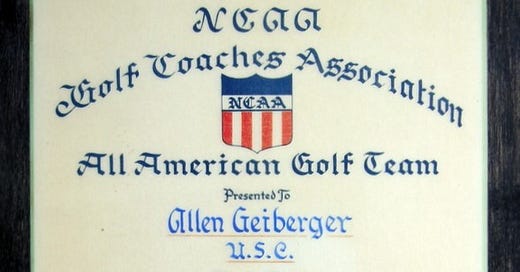


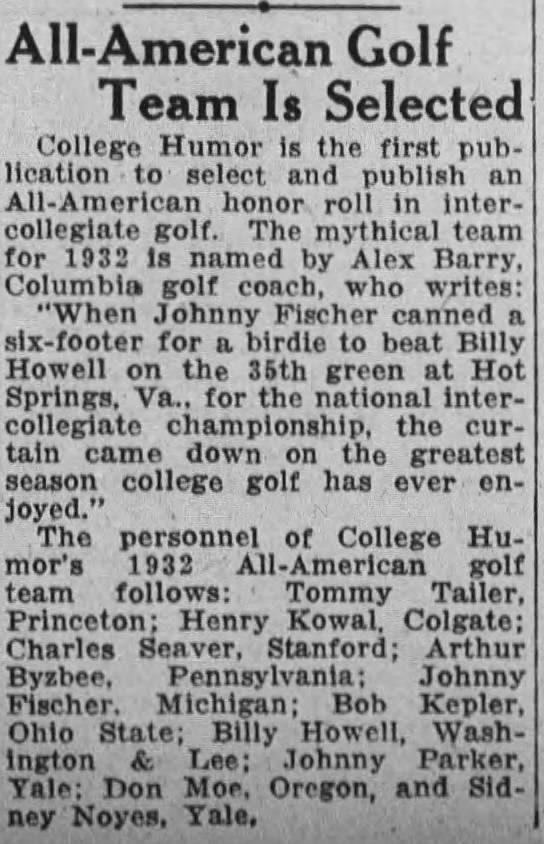

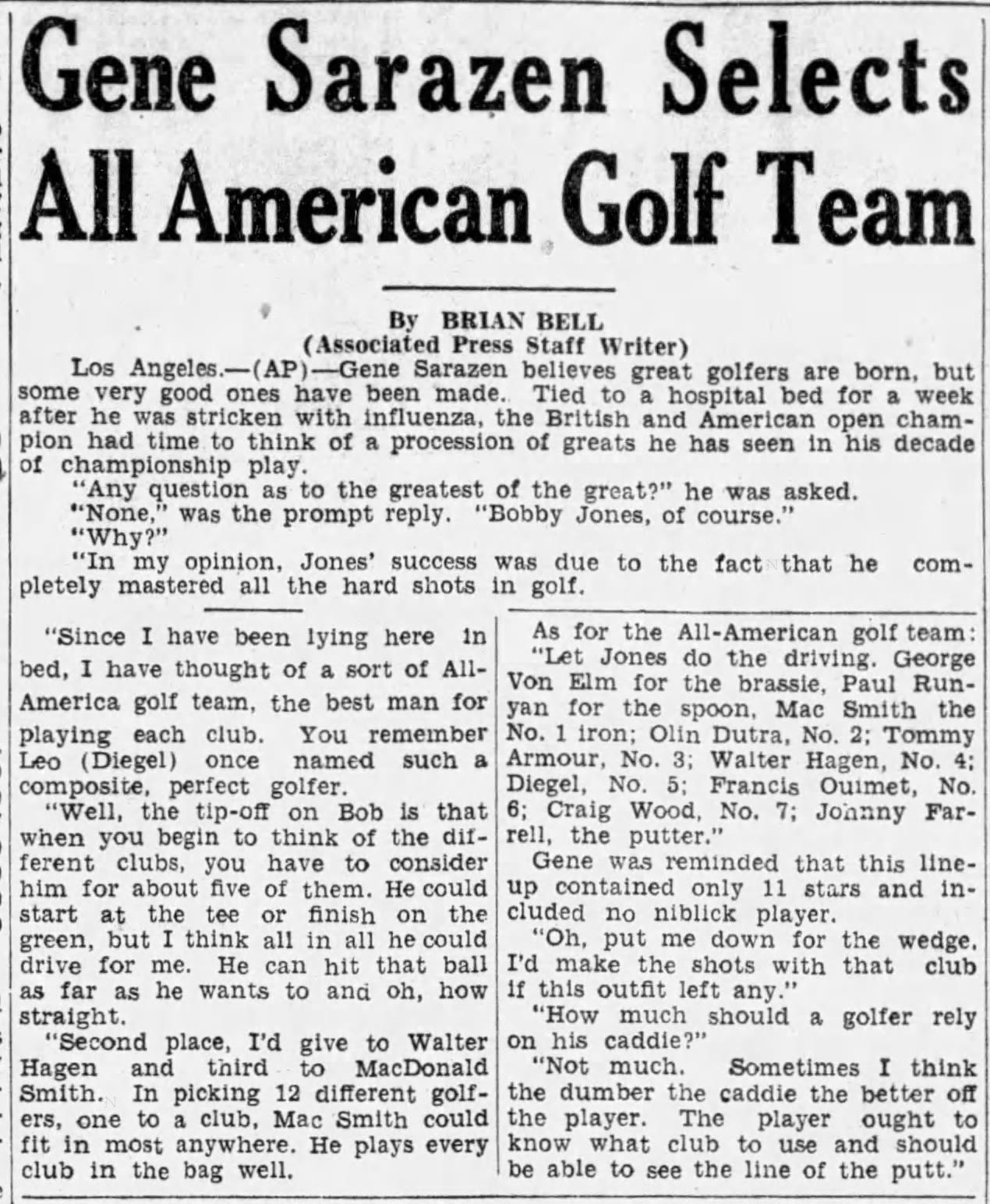
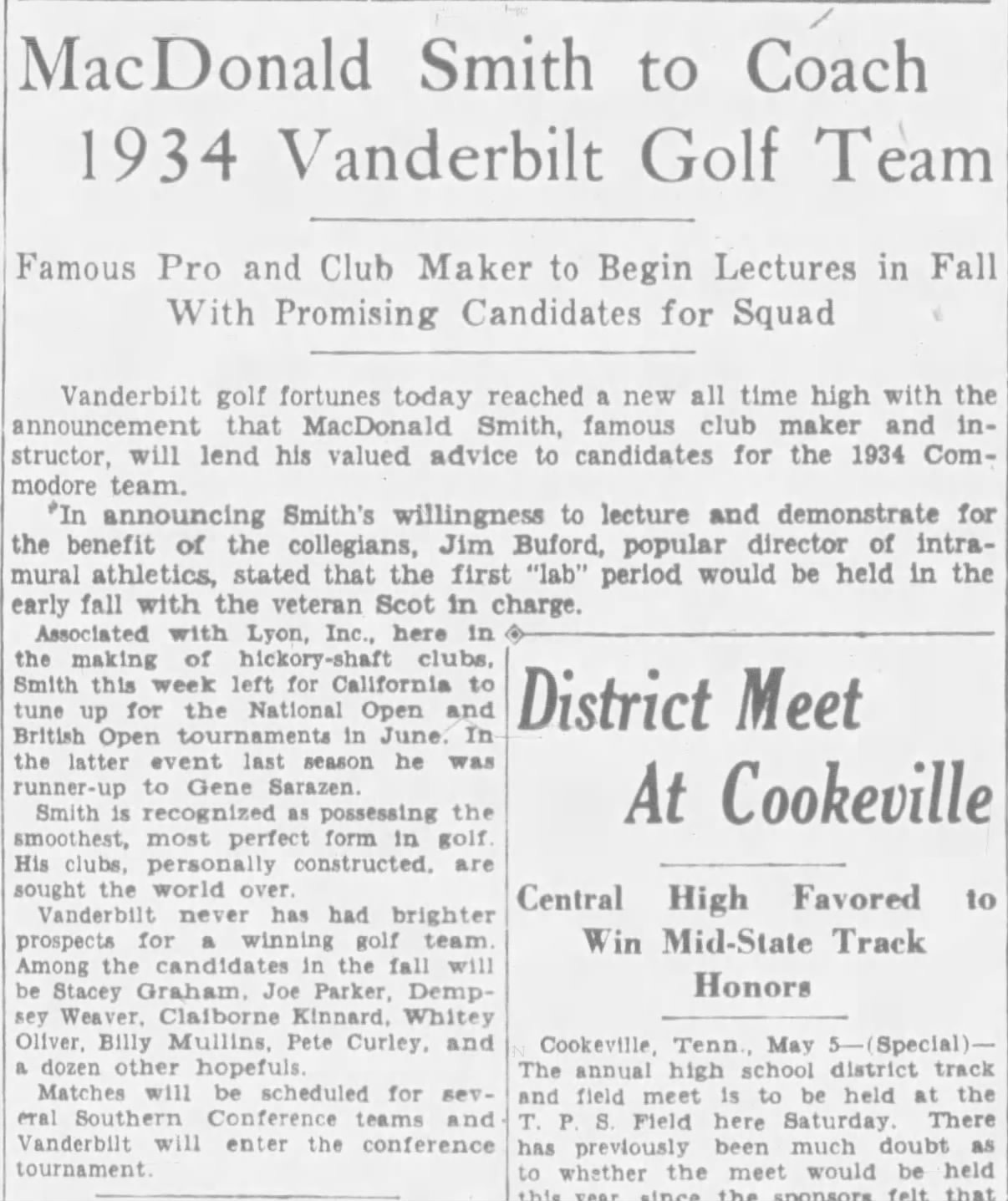

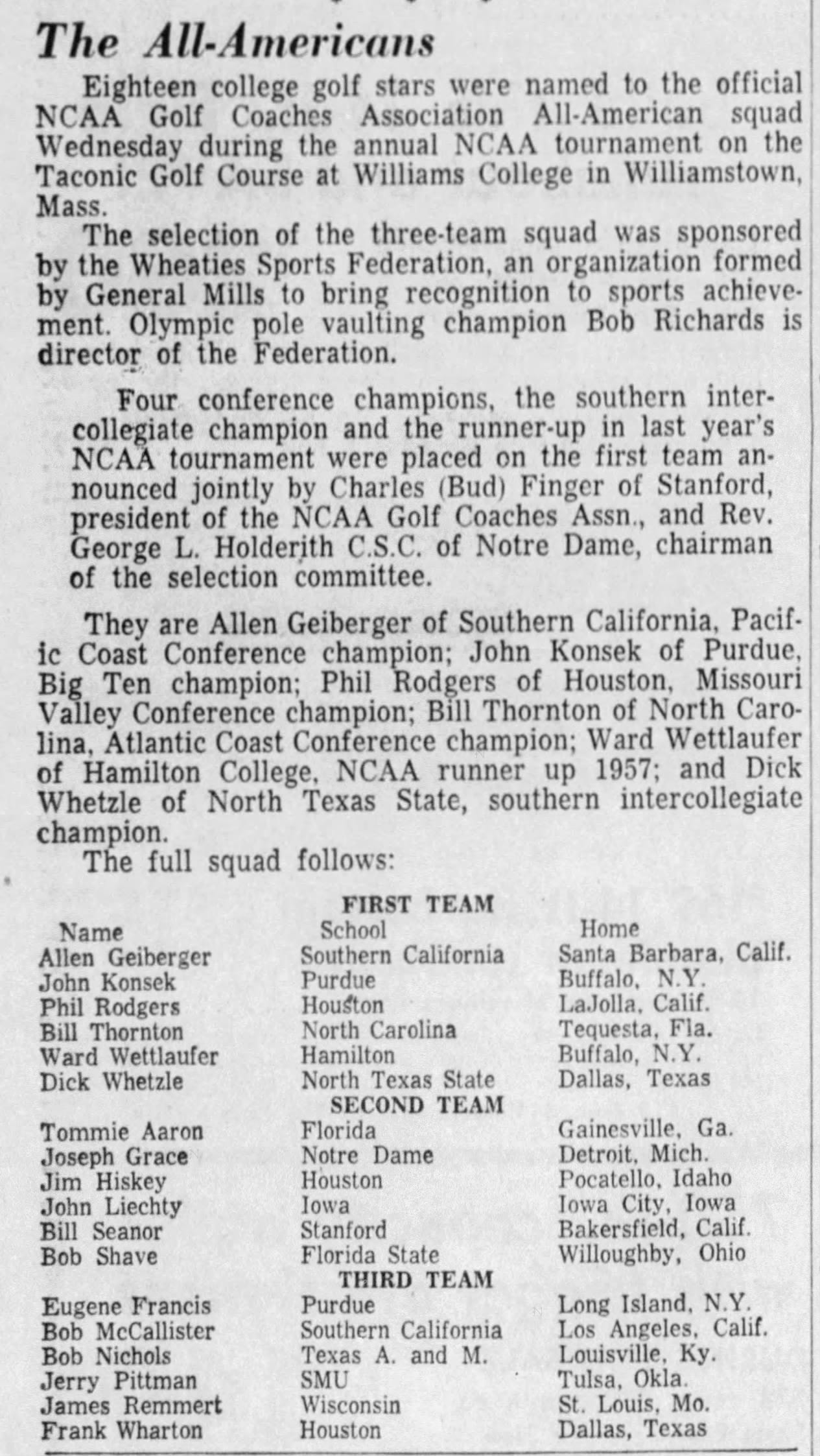





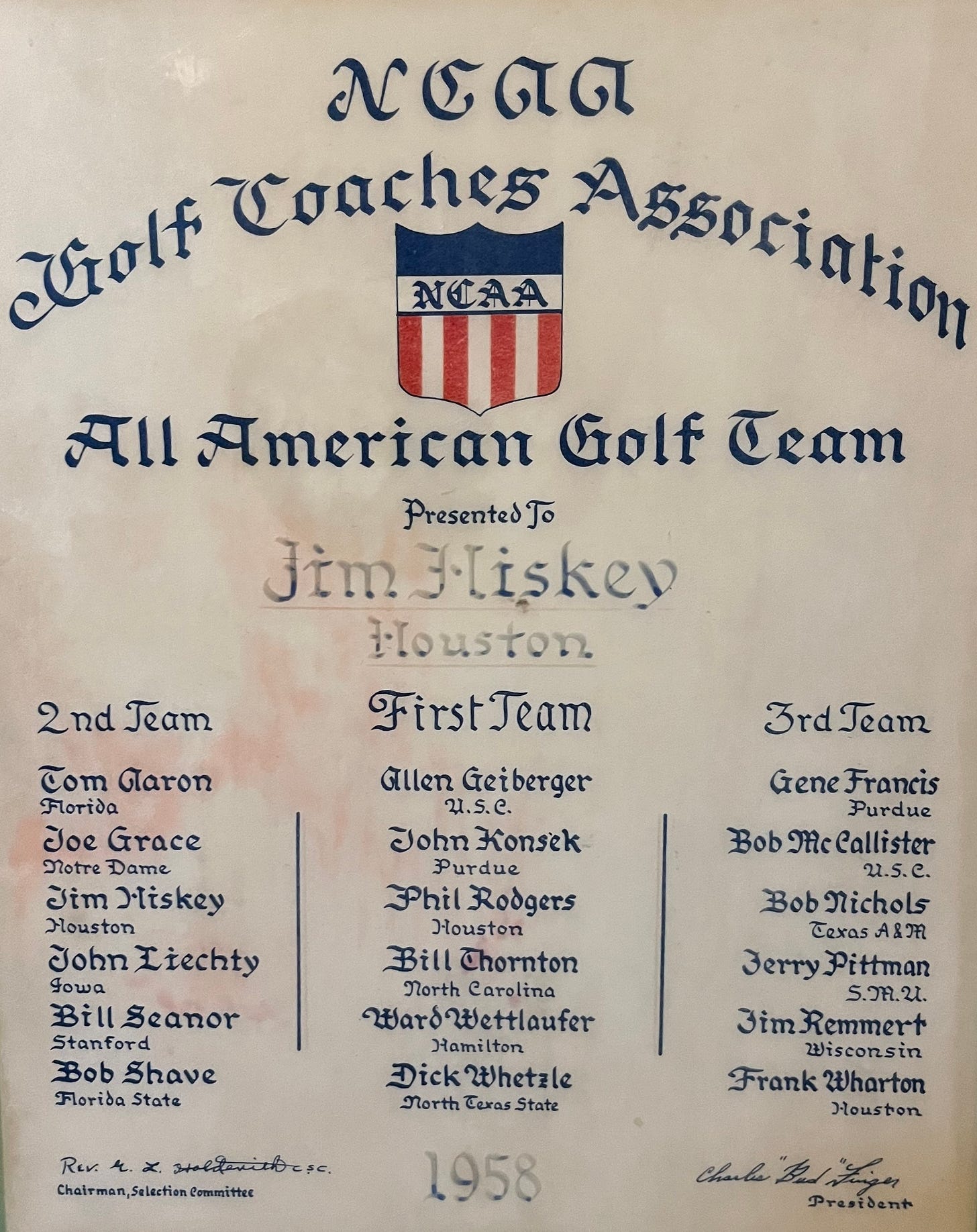
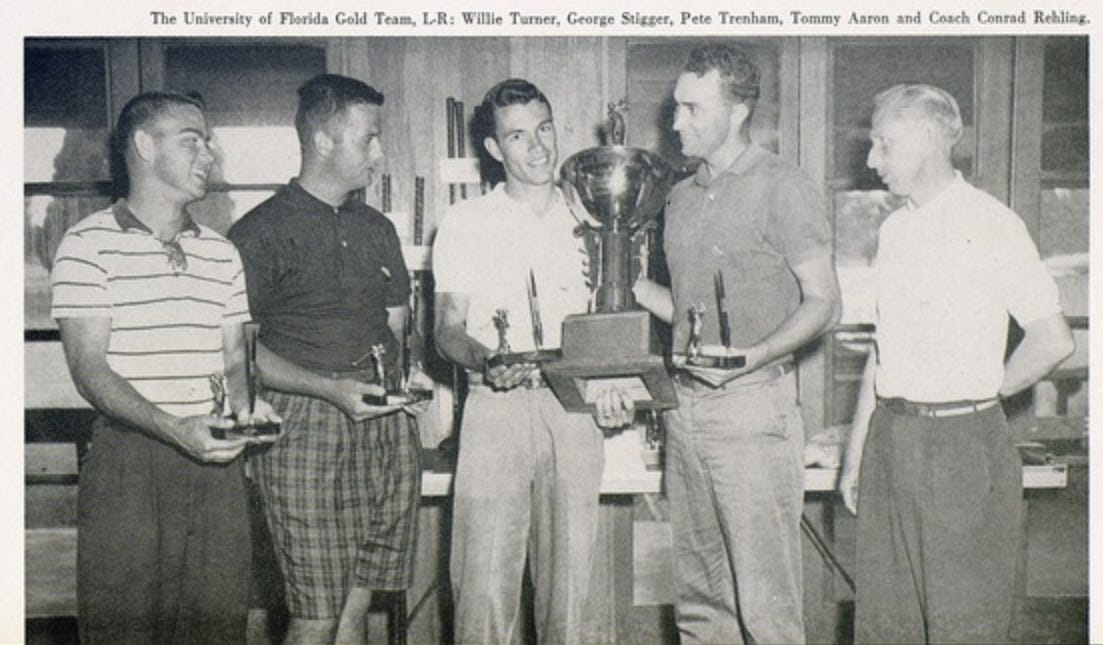


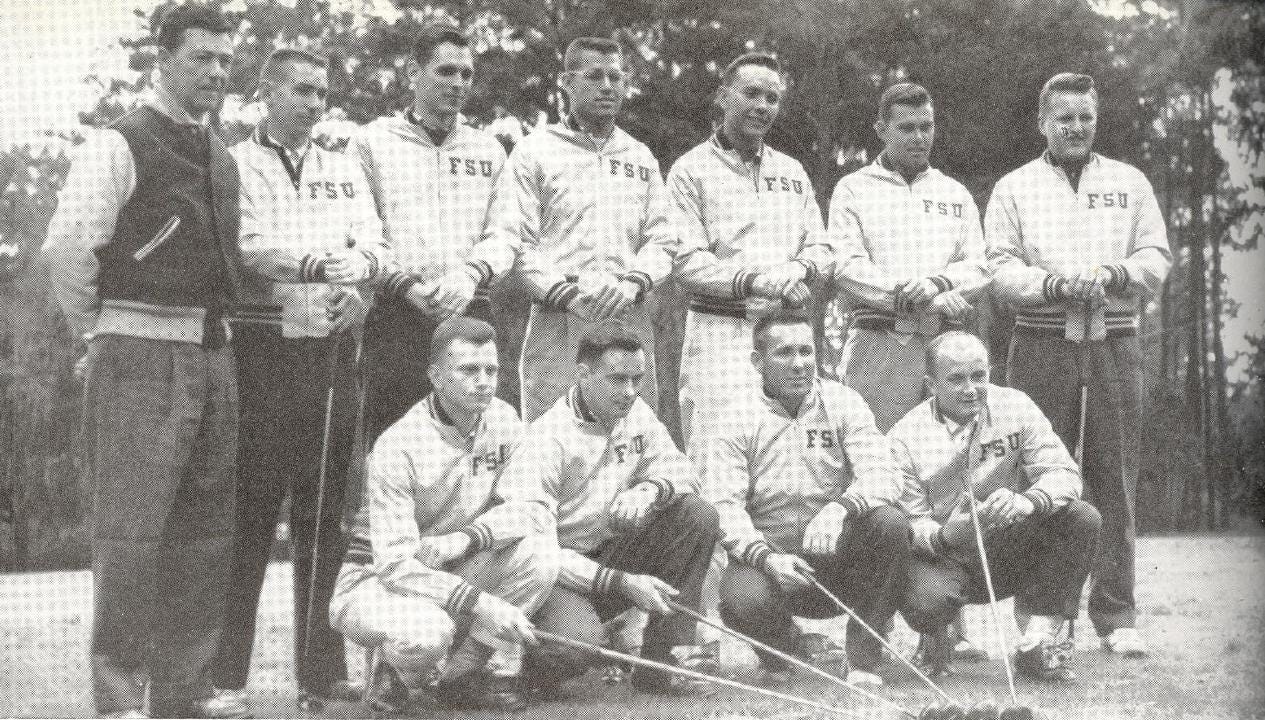



I listened to the AI generated podcast of this article that you linked. That was so cool!